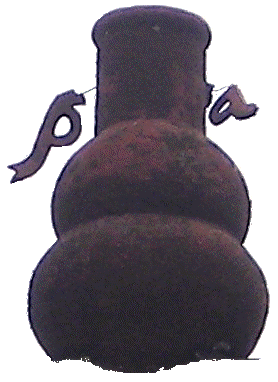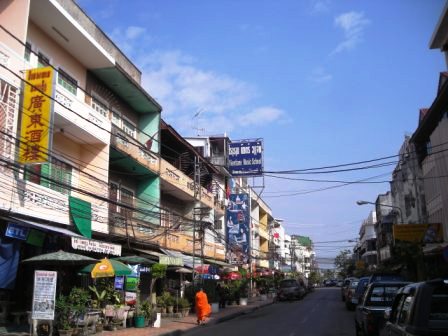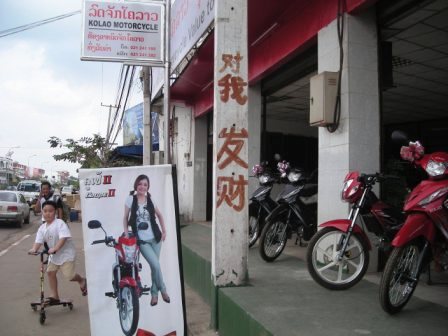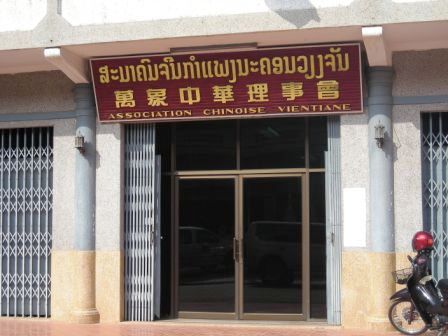 Vientiane Chinatown Vientiane Chinatown
 Vientiane Chinatown is generally considered to be in the area along Rue Chao Anou and its intersection with Rue Samsenthai. There you can find rows of Chinese businesses from jewelry shops, travel agents, supermarkets to food outlets and restaurants. Vientiane Chinatown is generally considered to be in the area along Rue Chao Anou and its intersection with Rue Samsenthai. There you can find rows of Chinese businesses from jewelry shops, travel agents, supermarkets to food outlets and restaurants.
In the evenings, this area becomes a food street attracting many diners. The makeshift stalls offer everything from regular rice, noodles, bao, dumplings, dim sum to traditional Chinese pastries.
Interestingly, except for the Vientiane Chinese Association, most of the other Chinese institutions like schools and temples such as the Fupo Temple, 伏泼庙, Fude Temple, 福德庙, and Xiu De Charity Hall, 修德善堂, are outside of Vientiane Chinatown.
In fact, when you walk around central Vientiane, you can see a lot of Chinese businesses easily identified through their signboards with Chinese characters.
Not all of these businesses belong to the overseas Chinese community in Vientiane. Like many in Luang Prabang, many Chinese had either fled overseas after the 1975 Communist victory or had sent their children overseas.
One of the most common destinations for these departing Laos Chinese was France where many of them settled in Paris Chinatown 13 arrondissement.
Many of these businesses are established by new Chinese migrants coming from Mainland China. Their increased presences have at times created tension with local society.
The most important Chinese organization in Vientiane is the Vientiane Chinese Association that manages schools, temples, old folks home, charities and self help groups.
The Chinese Association also organizes cultural programs for the Chinese community and the local society. One of the most popular and well known events is the 10 day opera performance at the Fude Temple during the Chinese New Year period. The Chinese in Vientiane also have local lion dance troupes allowing the youth to learn and to experience their cultural heritage.
The Chinese landscape in Vientiane Chinatown and central Vientiane can be described as having two layers of Chinese landscape. A Laos Chinese community that has since dwindled but whose cultural institutions still exits and still functions. Another layer is that of the new Chinese migrants whose community is probably larger in number but more transitional.
Related articles:

|

 Vientiane Chinatown
Vientiane Chinatown Vientiane Chinatown is generally considered to be in the area along Rue Chao Anou and its intersection with Rue Samsenthai. There you can find rows of Chinese businesses from jewelry shops, travel agents, supermarkets to food outlets and restaurants.
Vientiane Chinatown is generally considered to be in the area along Rue Chao Anou and its intersection with Rue Samsenthai. There you can find rows of Chinese businesses from jewelry shops, travel agents, supermarkets to food outlets and restaurants.


